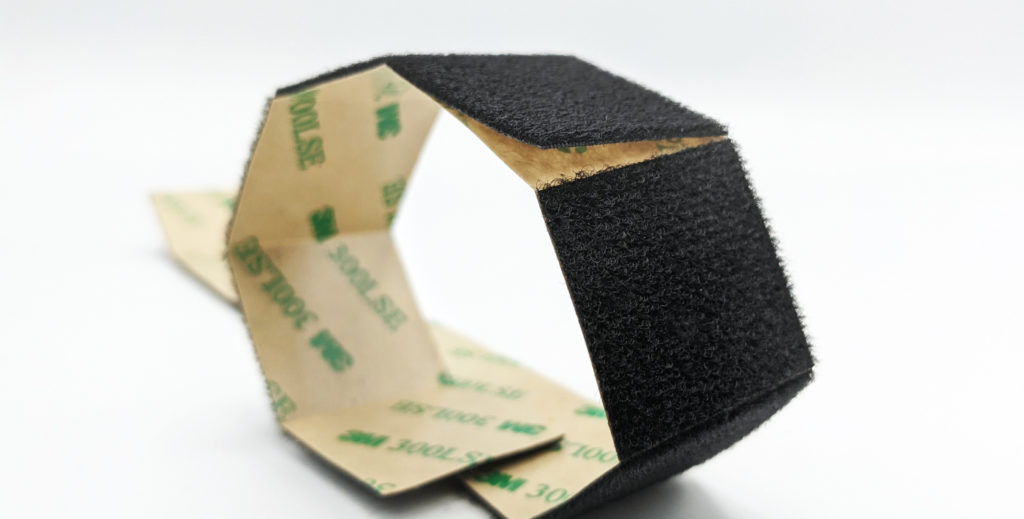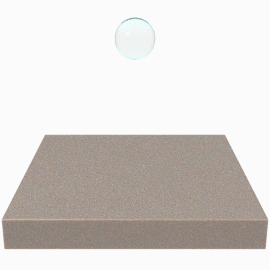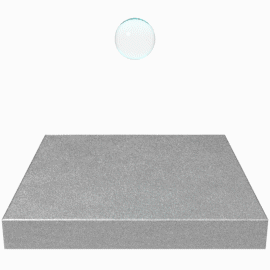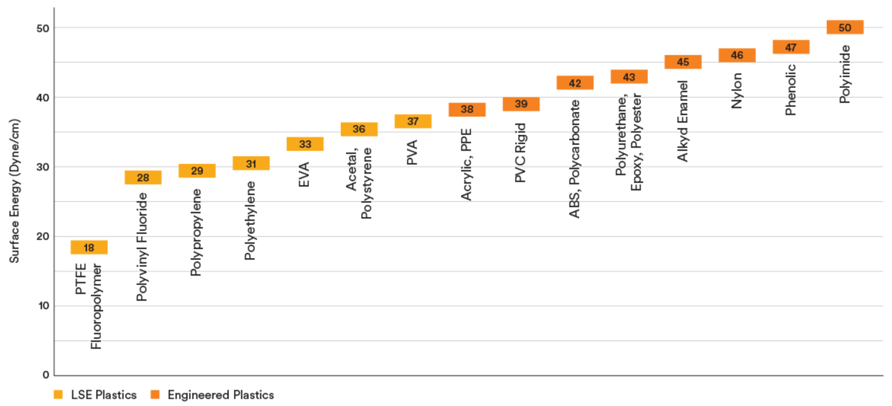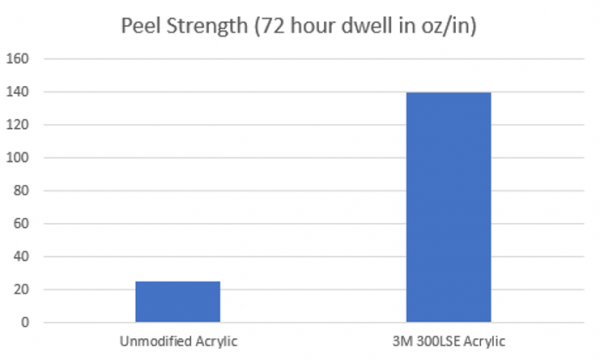Lightweighting is a key trend in manufacturing for many manufacturers of thermoplastic or composite products and the use of a reclosable fastener, like a Halco hook and loop fastener backed with a pressure sensitive adhesive (PSA), can solve many design challenges. Other mechanical fasteners and specially designed fixtures can often be eliminated, simplifying the product design and speeding production.
In order for a reclosable fastener to work effectively in the design, the adhesive on the fastener must adhere more securely to the substrate than the force required to open the fastener. There must be a strong bond.
Pressure sensitive adhesives offer a range of performance from basic levels of attachment in relatively controlled room temperature conditions to very high levels of performance in very demanding application conditions. These more demanding applications may require high peel or shear strength, or UV, temperature and chemical resistance. Basic attachment needs can often be met by a PSA using synthetic rubber adhesive, whereas higher performance applications often need an acrylic adhesive that has been formulated to match the performance needs of the application and the surface energy of the substrate.
Manufacturers of many plastics and composites, as well as some other materials, such as powder-coated metals or specialty coated papers have a unique challenge because many of these materials have “low surface energy”. Pressure sensitive adhesives need to flow out across the surface, but lower surface energy materials, like TPO, polyethylene or polypropylene, are harder to adhere because their lack of surface energy doesn’t allow the adhesive to flow properly and achieve intimate contact. Whereas higher surface energy substrates, like most metals, allow the adhesive to flow more freely and achieve a more complete wet out of the surface.
An Analogy
One story to illustrate this effect is your car being freshly waxed. The waxy surface of the car has low surface energy impeding the flow of the water across the surface, causing it to bead up. Whereas an unwaxed car has high surface energy and the water flows freely across the surface. Adhesives are viscoelastic and their action across a surface is more complicated than this simple analogy, but still the analogy is useful.
Low Surface Energy
Molecules on the surface of low-surface-energy materials are quite happy the way they are. There is very little attraction to any molecule, especially adhesive molecules. Materials with a surface energy below 36 dynes/cm are considered low surface energy and are very difficult to bond. These include polyolefin plastics such as polypropylene and polyethylene as well as “non-stick” surfaces such as polytetrafluorethylene (PTFE).
High Surface Energy
Molecules on the surface are so strongly attracted to each other that they will very happily be attracted to liquid molecules as well. As a result, these materials are relatively easy to wet out and, in turn, to bond. High surface energy materials have surface energies on the order of 100s or 1000s of dynes/cm and include many metals and glass.
Low Surface Energy Substrates
Generally speaking, most metals have high surface energy and most plastics have a much lower surface energy and thus are much more difficult for adhesives to adhere or bond. Scientists measure the surface energy of a material in Dynes/cm, (same as mJ/m2 or mN/m). Stainless steel, for example, is frequently used to measure the peel force of an adhesive tape. It has a surface energy of 700-1100 is Dynes/cm. In comparison, a material like polyethylene only has a surface energy of 31 Dynes/cm. Because it has such low surface energy, it is a much harder material for adhesives to bond.
Within the range of plastics, there are some with higher surface energy and others with lower. Adhesives generally need about 36 Dynes/cm to adhere relatively easily. For example, materials like ABS and Nylon are not that difficult to adhere, but others like polyethylene or polypropylene are much more difficult and require specially formulated adhesives specifically designed for low surface energy plastics.
Source: (https://www.3m.com/3M/en_US/bonding-and-assembly-us/resources/science-of-adhesion/categorizing-surface-energy/)
Conversely, most metals have very high surface energies ranging from 500 to 1,100 Dynes/cm, making them easy for adhesives to bond.
Strategies for Better Adhesion to Low Surface Energy Plastics
One simple tactic that most manufacturers can use to improve the adhesion to plastics is to clean the surface with isopropyl alcohol and then apply a primer. User of a primer increases the surface energy of the material and promotes better adhesion. We recommend 3M’s Primer 94.
Then I’d suggest that you select an adhesive tape, to go with your fastener, that is specially formulated for adhesion to low surface energy plastics. You can select a synthetic rubber adhesive tape, which has good initial grab to plastics, but will also be limited in its performance, temperature and chemical resistance. Higher performance applications will need an acrylic adhesive tape. Adhesive manufacturers like 3M and others modify their adhesives for low surface energy plastics by adding tackifiers. This softens the adhesive resin system allowing it to flow more easily to “wet out” the substrate. Adding a tackifier to the resin system though can sacrifice some shear strength and temperature performance, so adhesive designers can also “cross-link” the adhesive chains to increase shear strength, temperature, and chemical resistance. In essence, the tackifier makes it soft and sticky and the cross-linking makes the adhesive tougher.
HALCO features and recommends 3M’s 300LSE adhesive tape system for most applications involving adhesive-backed fasteners on low and high surface energy plastics, as well as powder-coated metals. 3M’s 300LSE system offers a blend of tackification for better initial bonds to plastics and cross-linking to give it excellent performance characteristics that far exceed what is available from a rubber adhesive tape. Here’s some of the data that shows its superior performance on plastics:
Source: (https://www.3m.com/3M/en_US/company-us/all-3m-products/~/3M-Adhesive-Transfer-Tape-9472LE/?N=5002385+3293242509&rt=rud)
What is remarkable about this performance is that there is almost no degradation in performance when the adhesive is used on polypropylene or ABS relative to the high performance you would expect on stainless steel. Also, as you can see in the following graph, the performance of the 300LSE adhesive is significantly higher than an unmodified acrylic.
Optimizing Manufacturing with the Right Adhesive Choice
Whenever adhesive tapes are used in a customer’s design or manufacturing process, it’s imperative that customers thoroughly test the product in their application. But understanding the relative surface energies of various substrates early and then selecting the right adhesive for that substrate can eliminate many problems and improve manufacturing.
We invite you to contact us if you need help picking the right adhesive tape and fastener for your particular application.
Do you want to talk through the selection of an adhesive for your fastening component? Tell us a little about your project and we’ll get right back to you.
